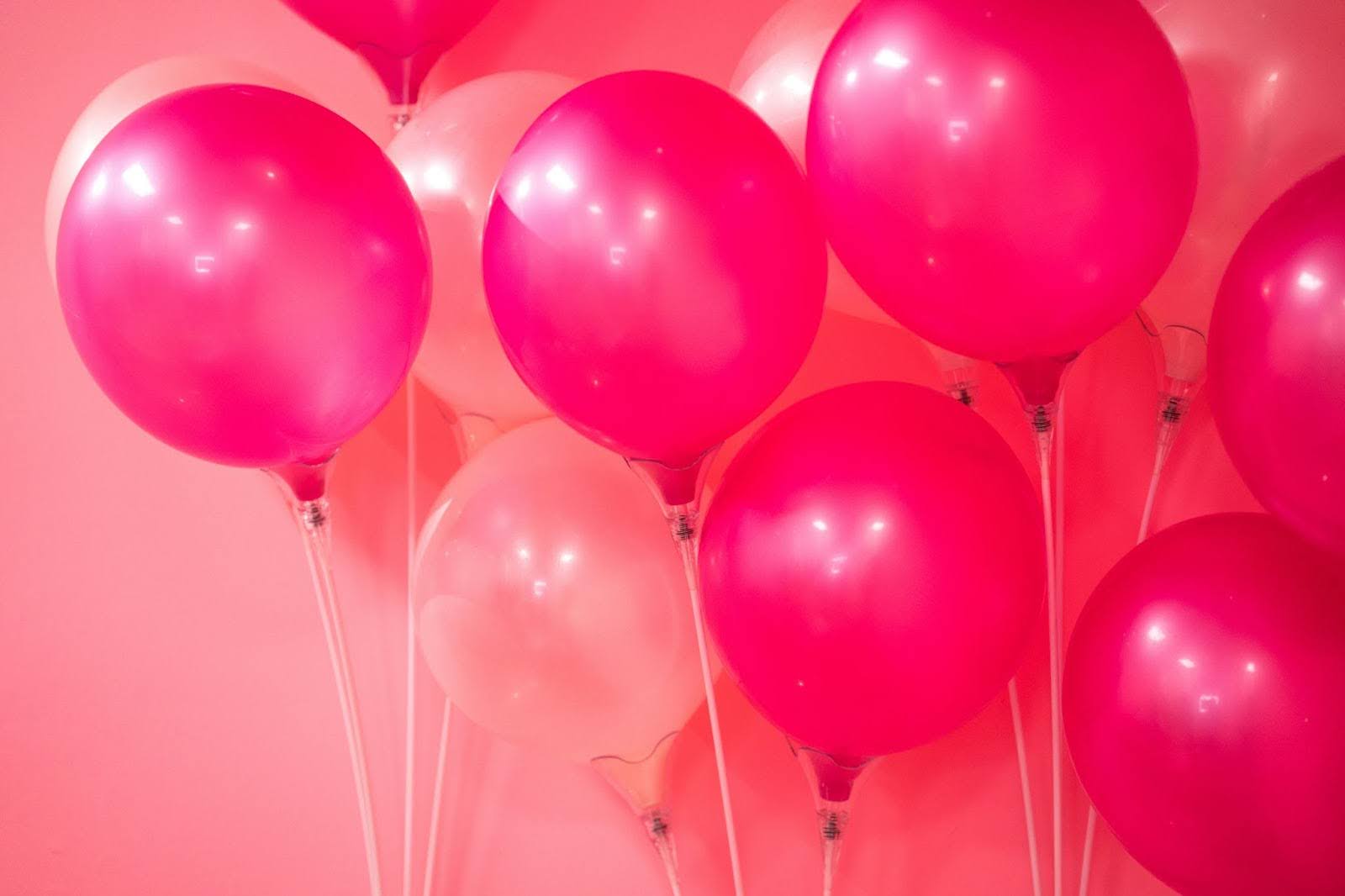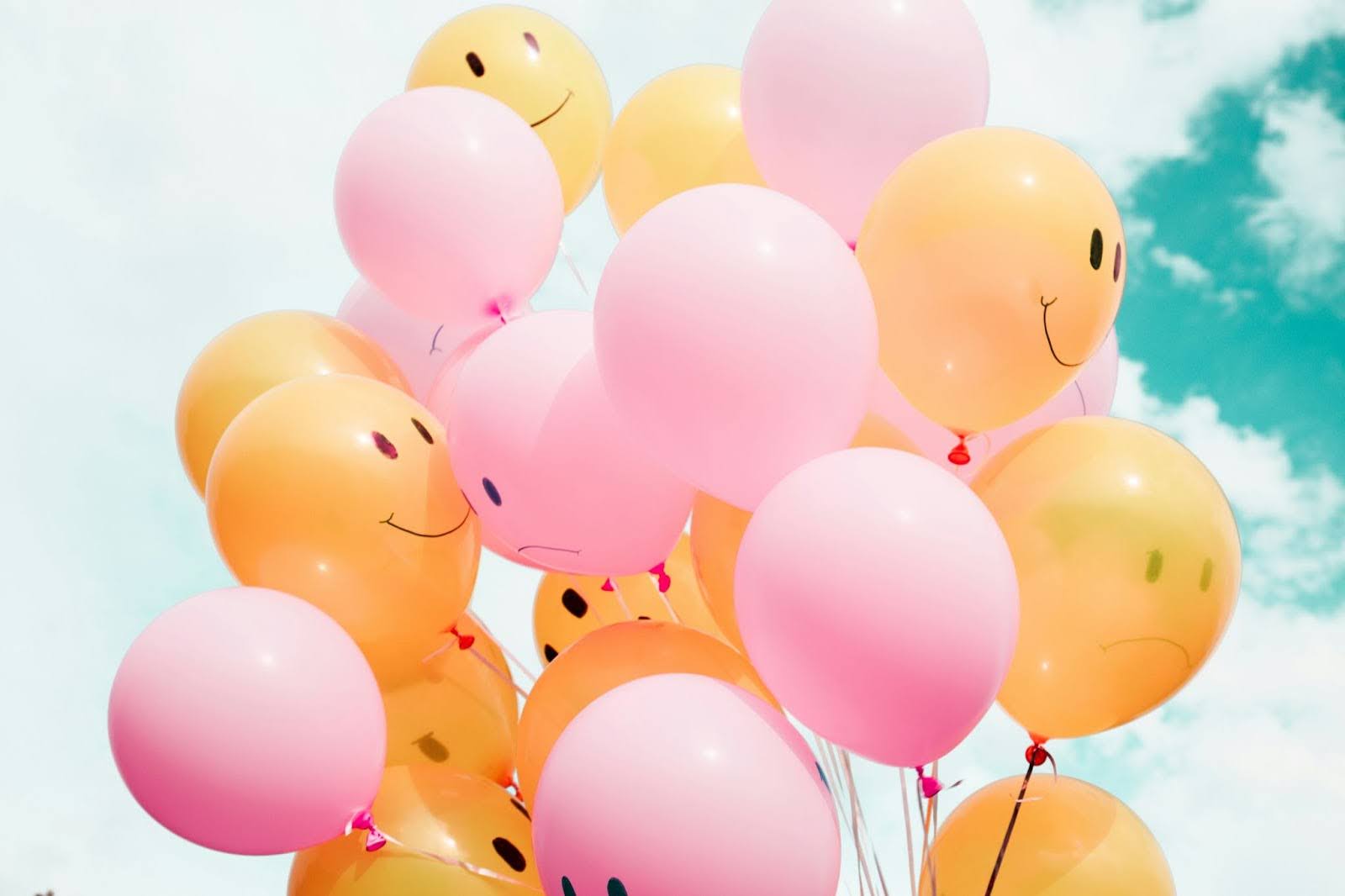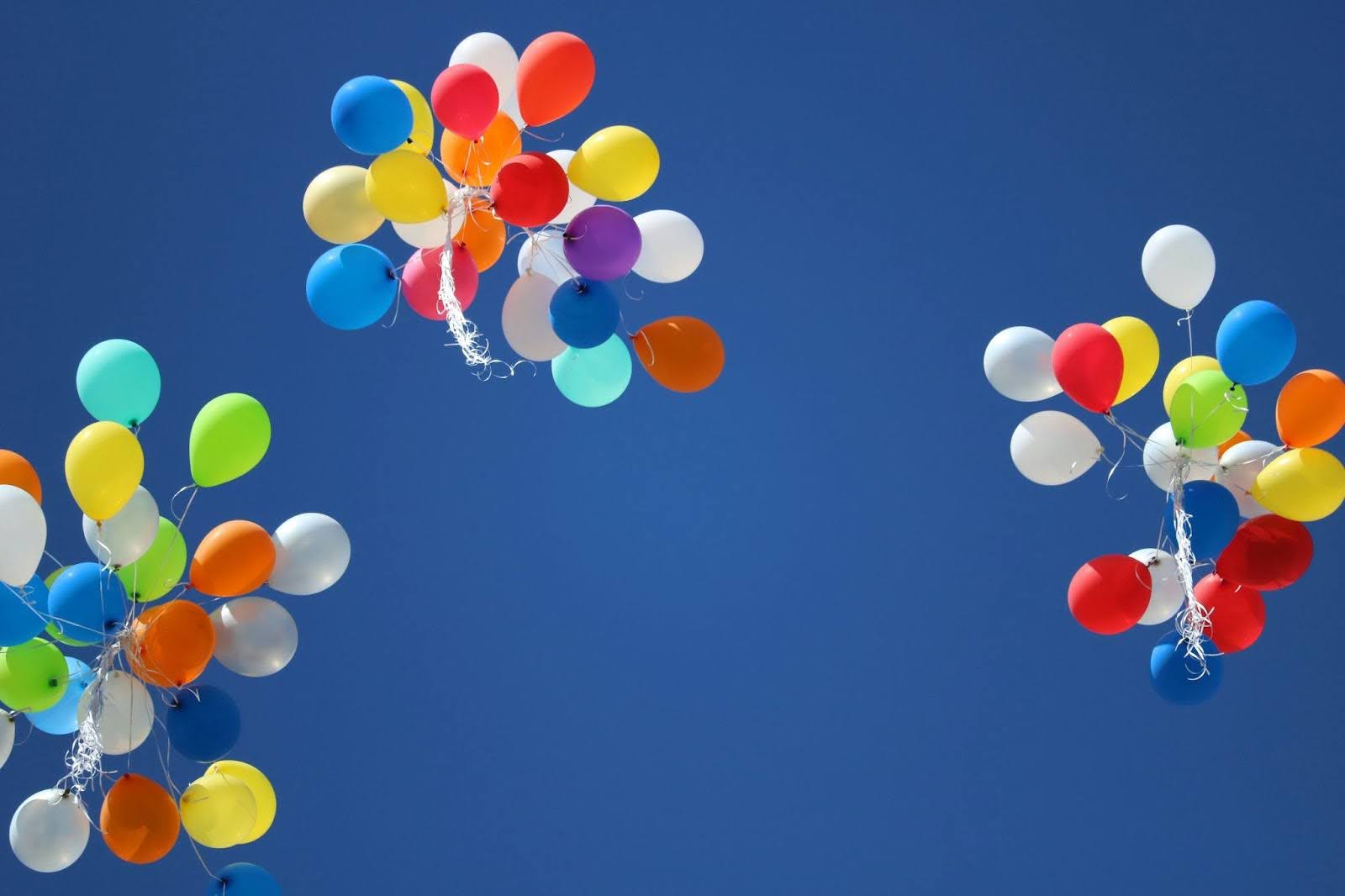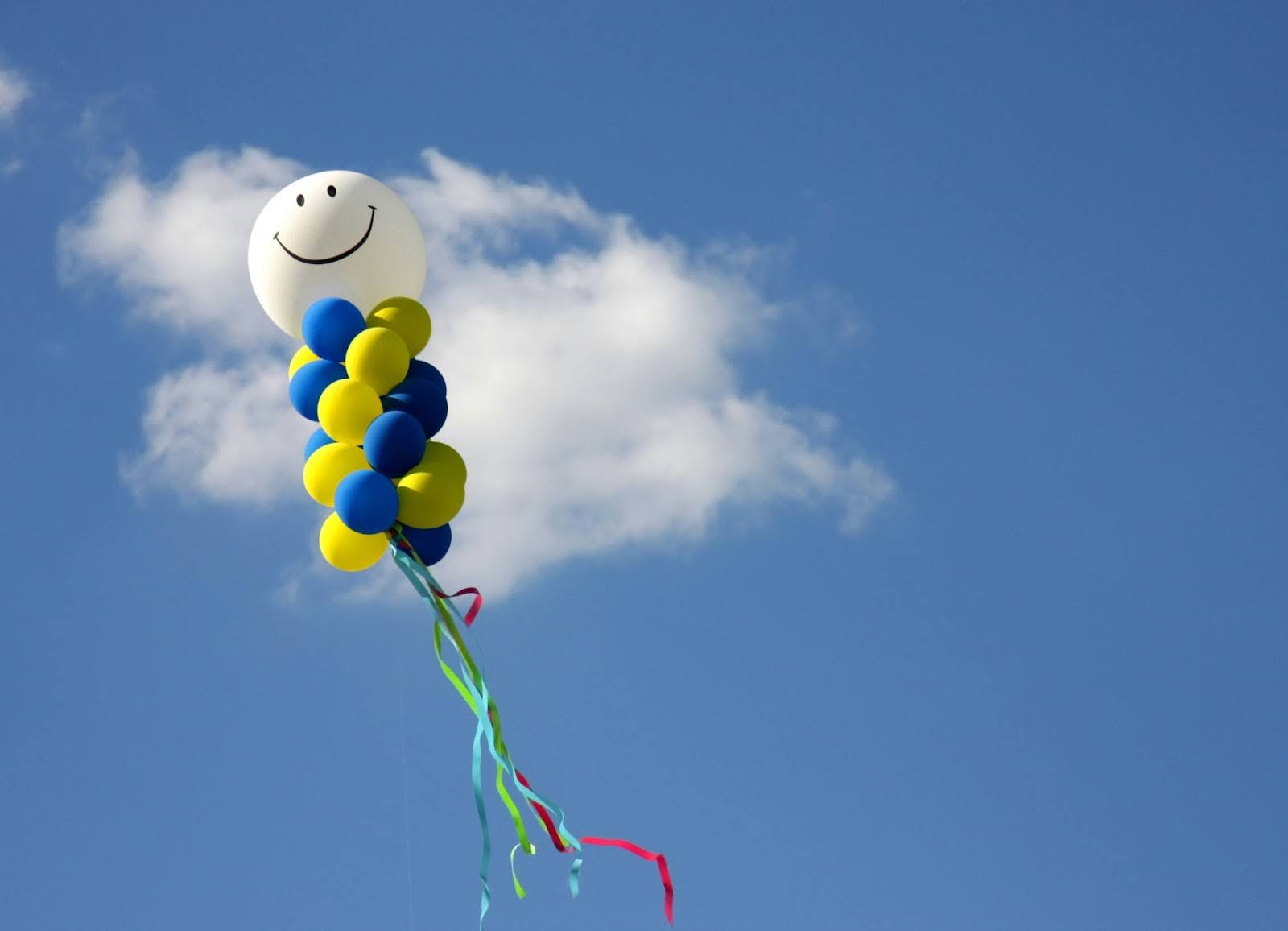
The humble balloon has a surprisingly rich history, beginning not as a toy but as a tool for scientific experiments. From early models made of animal bladders to the first rubber balloon invented by Michael Faraday, its evolution is a story of innovation.
This article traces the journey of the balloon through key milestones: the invention of latex, the introduction of helium, and the development of foil balloons. We explore how this simple object transformed into the ultimate symbol of celebration, now fully customisable and delivered right to your doorstep in Singapore.
The Earliest Precursors to the Modern Balloon
Long before the colourful birthday party decorations we know today, the concept of an inflatable object existed in various forms across different cultures.
These early versions were practical tools or items of spectacle, showcasing a basic human understanding of air pressure and buoyancy. They laid the conceptual groundwork for the balloons that would come much later.
Ancient Forms and Early Concepts
The very first “balloons” were not made of rubber but of organic materials. Historical records show that the Aztecs used the intestines and bladders of cats, which they would clean, sew, and inflate to create shapes for ceremonial purposes.
These were often presented as offerings to their gods. Similarly, the renowned scientist Galileo Galilei once used an inflated pig’s bladder in an experiment to measure the weight of air.
These early inflatables were functional. They were used to transport water or other liquids, acting as ancient canteens. Their purpose was purely practical or ceremonial, a world away from the playful objects they would become.
Separately, the human fascination with flight led to the creation of the first hot air balloon. In 18th-century France, the Montgolfier brothers discovered that heating air inside a lightweight paper or fabric bag would cause it to rise.
While distinct from the toy balloon, their invention demonstrated the powerful principles of aerostatics and cemented the balloon as an object of wonder and scientific curiosity.
The First Rubber Balloon
The true turning point in the history of balloons came not from a toymaker but from a laboratory. The invention of the first rubber balloon was a direct result of scientific exploration, created to solve a specific problem for one of history’s greatest experimental physicists.
Michael Faraday’s 1824 Invention
The person who invented the balloon as we recognise it was Professor Michael Faraday. In 1824, while working at the Royal Institution in London, Faraday needed a way to contain gases, particularly hydrogen, for his experiments. At the time, there were no suitable containers that were both lightweight and elastic.
To solve this, he ingeniously created his own. Faraday took two sheets of raw rubber, also known as “caoutchouc,” laid them on top of each other, and pressed the edges firmly together. To prevent the inner surfaces from sticking, he dusted them with flour.
The result was a small, elastic bag that could be inflated. This simple creation was the world’s very first rubber balloon. It was a purely functional scientific instrument, but it held the DNA of every party balloon that would follow.
Early Manufacturing and Public Introduction
News of Faraday’s invention quickly spread within the scientific and industrial communities. Just a year later, in 1825, a rubber manufacturing pioneer named Thomas Hancock saw its potential beyond the laboratory. He began selling DIY balloon-making kits.
These kits consisted of a bottle of rubber solution and a condensing syringe, allowing people to create their own balloons at home.
These early rubber balloons were a novelty, but they had significant drawbacks. The raw rubber was unstable. It would become sticky and soft in warm weather and turn hard and brittle when it was cold, making it unreliable as a toy. A further innovation was needed to make the balloon a practical and durable product for the public.
The Birth of the Latex Balloon
For the balloon to become a true staple of celebrations, it needed to be made from a material that was consistent, durable, and easy to produce in large quantities.
The answer lay not in raw rubber but in a refined, stabilised version of it: vulcanised latex. This development marked the true beginning of the modern balloon industry.
The Invention of Vulcanised Latex
The problem with early rubber balloons was their sensitivity to temperature. They simply weren’t practical for widespread use. This challenge was solved through the process of vulcanisation, a method perfected by inventors like Charles Goodyear. Vulcanisation involves heating rubber with sulphur, which creates cross-links between the rubber molecules. This makes the material much stronger, more elastic, and resistant to changes in temperature.
Building on this innovation, J.G. Ingram of London produced the very first vulcanised latex balloons in 1847. These balloons looked and felt much like the ones we use today.
They were durable, held their shape, and could withstand a wider range of temperatures. This was the prototype for the modern party balloon, answering the question of “what were old balloons made of?” before the mass-produced era.
Mass Production and the Rise of the Party Balloon
While vulcanised latex was a major step forward, balloons remained a relatively niche product for many decades. The catalyst that launched the history of party balloons into full swing was the perfection of the manufacturing process in the 20th century.
In the early 1930s, the Tillotson Rubber Company in the United States developed a method to mass-produce latex balloons. This involved dipping balloon-shaped forms into liquid latex, which was then cured and rolled off, creating a seamless and consistent product.
This breakthrough made balloons inexpensive and readily available to everyone. It was at this point, when balloons became popular, that they transformed from a novelty item into an essential decoration for birthday parties, holidays, and events. For the first time, they could be produced in a rainbow of different colours, adding to their festive appeal.
The Gases That Make Balloons Fly
A balloon is just a piece of rubber until it is filled with gas. The choice of gas is what gives a balloon its defining characteristic: the ability to float. The story of which gases have been used is one of moving from a highly effective but dangerous option to a safe and stable standard.
The Dangers of Hydrogen
The first gas used to lift balloons, both large and small, was hydrogen. Michael Faraday used it in his original experiments because it is the lightest element in the universe, providing excellent lift. For many years, hydrogen was the gas of choice for filling lighter-than-air craft and toy balloons.
However, hydrogen has one major flaw: it is extremely flammable. When mixed with oxygen in the air, it becomes highly explosive. Several historical disasters, most famously the Hindenburg airship catastrophe in 1937, dramatically illustrated the dangers of using hydrogen. This made it an unsuitable and unsafe choice for balloons intended for parties and children.
The Safety of Helium
The safe alternative to hydrogen is helium. It is the second-lightest element and, most importantly, it is an inert gas. This means it does not react with other elements and will not burn or explode.
Although helium was discovered in the 19th century, it was initially rare and expensive. It wasn’t until large reserves were found, primarily in the United States, that it became commercially viable for widespread use. Once it was available, it quickly replaced hydrogen as the standard lifting gas for balloons.
The history of helium balloons is a story of safety first. Today, helium is the only gas recommended for filling floating balloons for parties and events, ensuring that the fun remains safe for everyone, especially for families planning celebrations in Singapore.
Innovations In The 20th Century And Beyond
The basic latex balloon dominated the market for decades, but the desire for longer-lasting decorations and more complex designs spurred further innovation. The late 20th century saw the introduction of new materials and new forms of balloon art, expanding the possibilities of what a balloon could be.
The Development of Foil (Mylar) Balloons
One of the main limitations of latex balloons is that they are porous. Helium atoms are very small and can slowly escape through the stretched latex, causing the balloon to deflate within a day or two. In the late 1970s, a new type of balloon was developed to solve this problem: the foil balloon.
Often referred to by the brand name Mylar, these balloons are made from a thin sheet of nylon that is coated with a metallic layer of polyethylene. This material is much less porous than latex, allowing foil balloons to hold helium and stay afloat for weeks.
Another major advantage was their suitability for printing. The non-stretchy surface allowed for detailed, high-quality images and messages to be printed on them. This invention was a game-changer, paving the way for the rise of themed and custom balloons.
The Art of Balloon Twisting and Animal Balloons
Alongside material innovations, the way balloons were used also evolved. The history of balloon animals began to take shape in the mid-20th century, popularised by clowns and stage magicians. Entertainers discovered that by under-inflating long, thin balloons, they could be twisted and tied into various shapes without popping.
This led to the development of specific balloons for this purpose, such as the “260” pencil balloon (meaning it is 2 inches in diameter and 60 inches long when inflated). Balloon twisting became a beloved form of entertainment at children’s parties and events, turning a simple inflatable into a sculpture and a souvenir.
From Party Shops to Personalised Surprises
In Singapore, balloons have become an integral part of the celebratory landscape. From a child’s first birthday party in a condo function room to large-scale National Day Parade events, they are a universal symbol of joy and festivity. The evolution here has mirrored global trends, moving from simple decorations to highly personalised and convenient gifting solutions.
The Modern Celebration Staple
The role of balloons has expanded far beyond simple, colourful bunches tied with a string. Today, they are used to create sophisticated and impressive decorations. Professional decorators craft elaborate balloon arches, organic garlands, and towering columns that can transform any venue.
Themed balloon bouquets, combining different shapes, sizes, and colours, have become a popular and visually striking gift or centrepiece for special occasions like baby showers, anniversaries, and corporate events.
The Rise of Customisation and Convenience
The biggest shift in the modern balloon scene has been towards personalisation and convenience, especially for busy Singaporean parents. Technology and the versatility of materials like foil have made it possible to create truly unique custom balloons.
What was once a premium service is now widely available. BearloonSG, for example, offers free customisation, allowing you to add a child’s name, a special date, or a heartfelt message directly onto the balloon, turning it into a cherished keepsake.
Convenience is just as important. In a fast-paced city like Singapore, parents appreciate services that save them time and effort. The evolution from buying a pack of balloons at a shop to having a fully arranged, helium-filled creation delivered to your door is a significant one.
Services offering free delivery remove the hassle of transporting bulky arrangements. BearloonSG stands out as a one-stop gift shop, combining custom balloons with curated hampers and beautiful flowers to create the perfect all-in-one present. With the fastest lead time available, even last-minute celebration planning becomes stress-free.
Conclusion On The History of Balloons
From a simple tool in Michael Faraday’s laboratory to the vibrant centrepiece of today’s celebrations, the history of balloons is one of remarkable innovation. The journey from fragile rubber balloons to durable latex and customisable foil balloons has transformed how we celebrate.
Each step, from the discovery of helium to the art of balloon twisting, has added to the joy they bring. This evolution has paved the way for modern services that offer not just a product, but a personalised experience. Today, the perfect balloon, customised with your own message, can be delivered right to your door, making every occasion in Singapore truly special and effortless.
At BearloonSG, we are proud to be part of this long and joyful history. We take the legacy of the simple balloon and elevate it, crafting personalised moments that stay with you long after the party is over.
We believe every celebration in Singapore deserves a touch of wonder, which is why we offer free customisation and free delivery on our balloon gifts.
Whether you’re planning a birthday bash or sending a heartfelt surprise, we make it easy to share happiness. Contact us! Explore our creations or reach out to our team – we’re here to help you tell your celebration story.
Frequently Asked Questions About The History of Balloons
Who First Invented The Balloon?
The first rubber balloon was invented by the renowned scientist Michael Faraday in 1824. He created it as a tool for his experiments with hydrogen at the Royal Institution in London, using two sheets of rubber pressed together.
What Is The History Of The Party Balloon?
The party balloon’s story began with the invention of vulcanised latex balloons by J.G. Ingram in London in 1847. These were much more durable than early rubber models. However, they only became a popular party item in the 1930s when companies like the Tillotson Rubber Company began mass-producing them, making them affordable and widely available for celebrations.
When Did Balloons Become Popular?
Balloons started to become widely popular for parties and public events in the early 1930s. This popularity surge was due to the perfection of the manufacturing process for latex balloons, which allowed them to be produced in large quantities and in various colours for the first time.
What Were Balloons Originally Made For?
Balloons were originally made for scientific purposes. Michael Faraday created the first rubber balloon in 1824 to contain and handle gases, specifically hydrogen, during his laboratory experiments. Before this, even earlier concepts using animal bladders were used for scientific demonstrations and carrying items, not for entertainment.
How Were Old Balloons Made?
The very first rubber balloons, made by Michael Faraday, were crafted by laying two round pieces of rubber on top of each other and pressing their edges together. The inside was dusted with flour to prevent the surfaces from sticking. Before rubber, ancient “balloons” were made by inflating and drying animal bladders and intestines.
Are Modern Balloons The Same As Old Ones?
No, modern balloons are very different. While old balloons were made from raw rubber or even animal bladders, modern balloons are primarily made from latex, which is much more durable and elastic. We also have foil (Mylar) balloons, which were introduced in the 1970s and can hold helium for much longer and feature complex printed designs.



